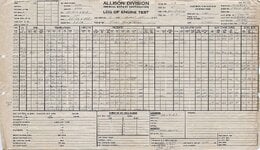I would appreciate any references to data on fuel consumption during factory tests of series production (in gal or liter per plane/engine) - primarily in the US/UK+Commonwealth/Germany. For example, were there any fuel consumption limits? Were there any measures taken to reduce fuel consumption? Is there any indirect information that might help to estimate values?
I was just shocked by some of the numbers for Soviet factories before the war, would like to compare.
I was just shocked by some of the numbers for Soviet factories before the war, would like to compare.

